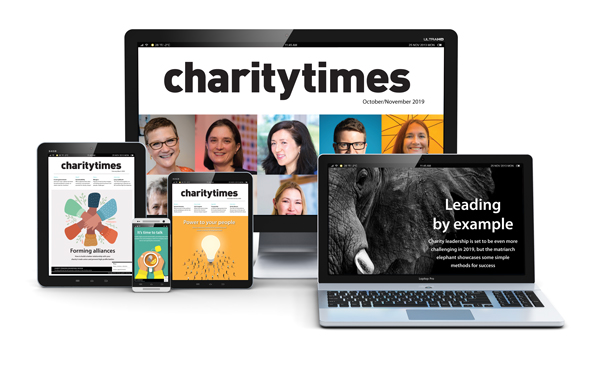The demand for charities is likely to remain high for some time with a projected black hole across the sector of £6.6bn, a charity leader has warned.
Pro Bono Economics CEO, Matt Whittaker, warned charities are likely to be left with a “permanent income scar” as a result of an increased demand and constrained capacity throughout the pandemic.
According to figures published by Whittaker on Twitter, national output is expected to remain at £380 per person lower than pre-pandemic expectations – even by 2027. This, combined with low employment rates are likely to lead to a decrease in charitable giving, Whittaker said.
“By the end of the year, we can expect around half a million more people to be unemployed than immediately ahead of the pandemic,” he said.
“Household incomes are projected to fall again near term. Even as they recover, they're not expected to make up the ground lost over the pandemic. By the start of 2025, average income is projected to be £1,200 down on pre-pandemic projections.
“And of course, distributions matter a lot with all of this. The pandemic has hit lower income households harder, with balance sheets deteriorating for this group even as they improved for higher income households. The cost of living crisis will again affect them disproportionally.”
Whittaker claimed the combination of these factors will lead to significant long-term impact for charities, which are still recovering from the impact of the pandemic.
“Demand for charities is likely to remain elevated for some time to come. But it looks like charities will be left with a permanent income scar. If public giving moves in line with projected consumption, the sector will face an ongoing hole of ~£6.6bn,” he added.
Certainly there’s nothing in survey responses to suggest that charity donations are high on the list of things that people who've enjoyed a savings windfall intend to do with their cash (perhaps revealing that the response option wasn’t even offered) pic.twitter.com/Rk693iBSTD
— Matt Whittaker (@MattWhittakerPB) October 27, 2021
Furthermore, a graph showing the public’s planned use of funds among households with increased saving showed a potential lack of desire to donate to charity.
“Certainly there’s nothing in survey responses to suggest that charity donations are high on the list of things that people who've enjoyed a savings windfall intend to do with their cash (perhaps revealing that the response option wasn’t even offered),” he said.
Figures instead reveal a higher desire for people with increased savings to hold it in a bank account, spend it or pay off debt. ‘Gift it’ or ‘other’, which could account for some charitable donations, accounted for just 9% and 4% respectively.
“All of which suggests many charities are likely to see a continuation of the pandemic story – needing to meet increased demand with constrained capacity – for some while yet,” Whittaker concluded.
The statistics come shortly after the Chancellor’s Autumn Budget. Among announcements made in the house of commons was the promise of £560m to youth services over the next three years; the first round of bids for the levelling up fund; and investment in culture, such as museums, galleries and libraries.
Find out more on the Budget here.













Recent Stories